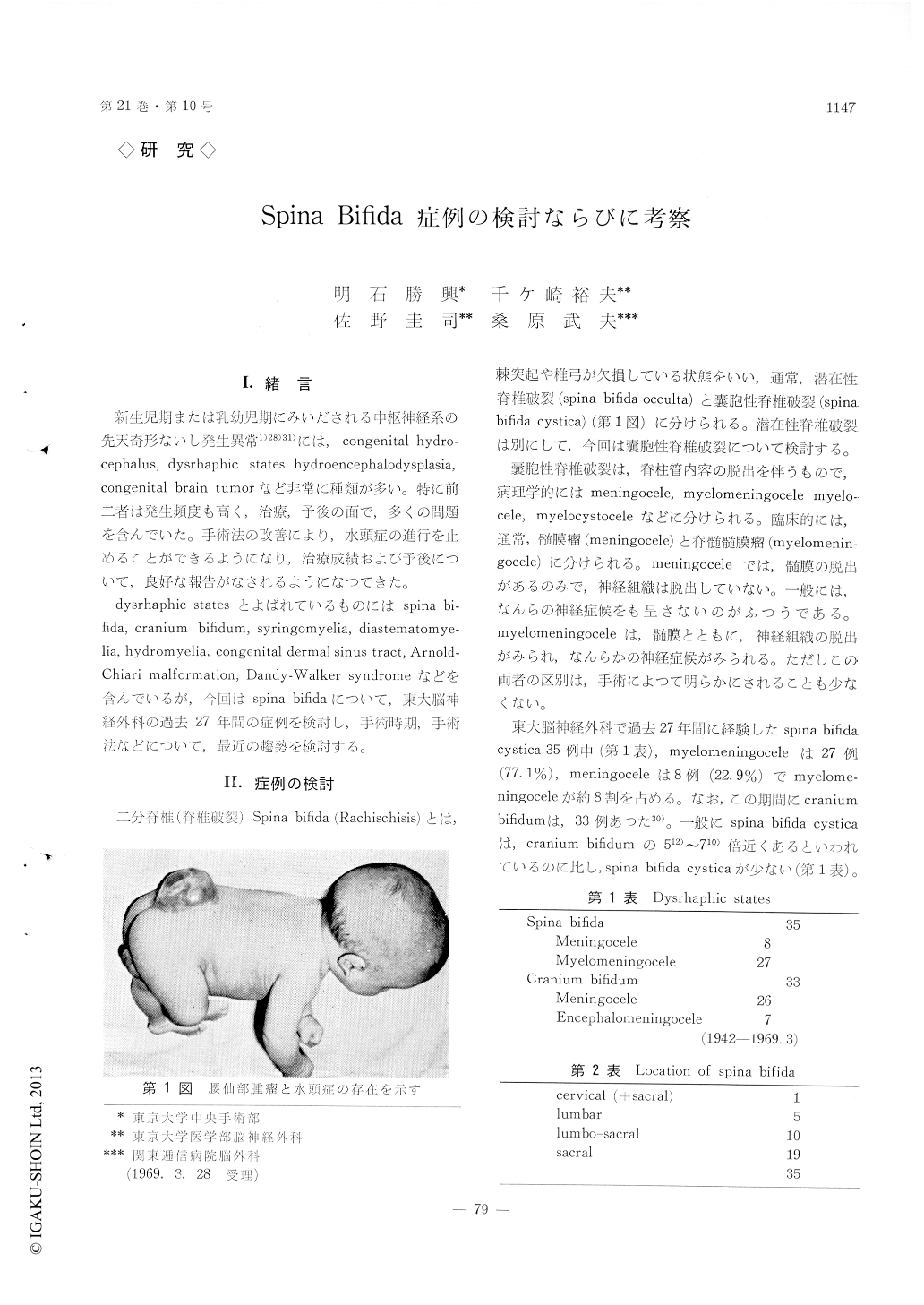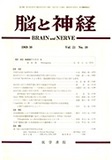Japanese
English
- 有料閲覧
- Abstract 文献概要
- 1ページ目 Look Inside
I.緒言
新生児期または乳幼児期にみいだされる中枢神経系の先天奇形ないし発生異常1)28)31)には,congenital hydro—cephalus,dysrhaphic states hydroencephalodysplasia, congenital brain tumorなど非常に種類が多い。特に前二者は発生頻度も高く,治療,予後の面で,多くの問題を含んでいた。手術の改善により,水頭症の進行を止めることができるようになり,治療成績および予後について,良好な報告がなされるようになつてきた。
dysrhaphic statesとよばれているものにはspina bi—fida, cranium bifidum, syringomyelia, diastenlatomye—lia, hydromyelia, congenital dermal sinus tract, Arnold—Chiari malformation, Dandy-Walker syndromeなどを含んでいるが,今回はspina bifidaについて,東大脳神経外科の過去27年間の症例を検討し,手術時期,手術法などについて,最近の趨勢を検討する。
Since 1942, 35 cases of spina bifida cystica were experienced in the depertment of Neurosurgery, University of Tokyo, of which 8 cases were menin-gocele and 27 cases were myelomenigoecle. The sex incidence was 18 cases in male and 17 cases in female.
Nineteen cases were spina bifida sacralis, 10 lum-bosacralis, 5 lumbaris. One case showed spina bifida cystica duplex (one sacral and the other cervical).
Spna bifida cystica is known to accompany various congenital abnormalities.
Hydrocephalus was the most important congenital abnormality. Among 8 cases of meningocele, there were only 4 cases with hydrocephalus, while 19 cases with hydrocephalus among 27 cases of myelomenin-gocele.
Plastic operation was performed on 31 cases (2 cases need not to take plastic operation and 2 died from other operation before plastic operation).
For hydrocephalus, suboccipital decompression was usualy performed on 13 cases in the past. However ventriculo-atriostomy was performed recently with reason of its effective results and operative safety. 6 cases were verified to accompany Arnold-Chiari mal-formation among 13 suboccipital decompression in 23 cases of hydrocephalus. According to Sano's classification of Arnold-Chiari malformation, this 6 cases were thought to be S-type (Arnold-Chiari malformation with spina bifida).
The mortality rate directly attributable to operation was 6.1%.
In a follow-up study over 5 years of 27 cases (including 2 dead cases by operation and one missing case), 10 cases (37. 3%) died, 9 (33. 3%) live in poor condition and only 7 (25. 9%) live in faitly good condition (3 out of 7 meningocele and 4 out of 20 myelomeningocele). Among 16 alive cases, sphincter disturbance of various degree was found in 13 cases (81. 3%), only 3 cases were continent. 7 cases were crippled partially or completely among 12 cases (75%) with motor disturbance of lower extremities. 9 cases (54. 3%) showed sensory disturbance. Only one showed mentaly retardation. Only 7 cases with-out hydrocephaluslive in fairly good condition. There-fore myelomeningocele with hydrocephalus showed rather poor prognosis. However, our recent now experience of early clossure of spina bifida cystica after birth suggested more favorable prognosis from the point of its mortality and morbidity.

Copyright © 1969, Igaku-Shoin Ltd. All rights reserved.


